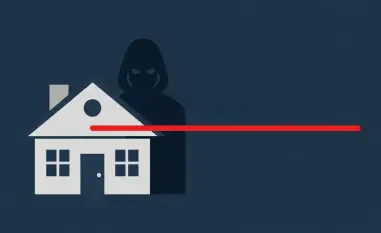The landscape of cybersecurity is undergoing a dramatic transformation as technologies that were once the realm of futuristic speculation rapidly become realities. At the forefront of this shift is the emergence of “evil AI,” artificial intelligence tools devoid of ethical safeguards, enabling cybercriminals to identify and exploit software vulnerabilities with unprecedented efficiency and speed. This alarming development was brought to light in stark terms at the recent RSA Conference held at the Moscone Center in San Francisco. Industry leaders and experts gathered to discuss how these AI-driven tools are reconstructing the boundaries of hacking and cybersecurity, significantly challenging traditional defense mechanisms. As the capabilities of “evil AI” evolve, cybersecurity experts are finding it increasingly difficult to keep pace, prompting urgent discussions on how to counter these sophisticated threats effectively.
Rise of Malicious AI Tools
The RSA Conference unveiled demonstrations exemplifying how malicious AI, designed without ethical guardrails, could pose significant threats to software security. Presenters Sherri Davidoff and Matt Durrin of LMG Security highlighted the use of rogue AIs like GhostGPT, DevilGPT, and WormGPT. These platforms can detect vulnerabilities in software systems more quickly than human oversight allows. WormGPT, a standout among its peers, functions as an unrestricted version of the well-known ChatGPT, freely addressing inquiries across the realm of legality. The presenters illustrated the capabilities of WormGPT by showing its proficiency in identifying flaws in established systems, such as DotProject’s SQL vulnerabilities and the infamous Log4j exploit in a subsequent demonstration. They showed that even an intermediate hacker could leverage these tools to create workable exploits, underscoring the danger posed by their unregulated use.
The development and acquisition of these AI tools like WormGPT pose new cybersecurity challenges. These tools, obtainable through non-traditional channels like Telegram, strip away ethical constraints, allowing them to address queries regardless of their malevolence. Consequently, cybercriminals stand to gain from vulnerabilities identified by these AI platforms, accessing detailed instructions for potential exploits. The resulting threat is not merely theoretical; rather, it represents an immediate, practical peril, reinforcing the perspective that these AI innovations are recalibrating the balance between cyber offense and defense. As these tools become more advanced and accessible, their potential misuse by malicious entities threatens to outpace the evolution of defensive strategies.
Implications for Cybersecurity Defense
The rise of these AI-driven hacking tools has significant implications for traditional cybersecurity measures, which are currently struggling to adapt and respond effectively. As demonstrated in RSA’s live sessions, these tools are adept at bypassing even well-established security platforms like SonarQube. They achieved this by providing complex and undetectable exploits against familiar structures, such as Magento e-commerce platforms. The comprehension and speed with which WormGPT operated highlighted how these AI tools transition from advanced hacking techniques to practical, accessible solutions for less skilled yet malicious users. This development is concerning, as it exposes the vulnerabilities within current cybersecurity practices that were previously effective.
Security experts are being pushed to rethink conventional defense mechanisms as they strive to combat this new breed of AI-assisted cyber threats. There is an increasing necessity to integrate AI into cybersecurity in order to preempt these malicious applications. By employing AI tools for good, experts aim to create responsive and adaptive defenses capable of countering potential threats before they can be fully exploited. Moreover, discussions at the conference highlighted the need for a collective and concerted response involving multiple stakeholders, including governmental and industry entities, to address this rapidly evolving threat landscape. This includes reevaluating existing regulations and cybersecurity policies to ensure they are robust enough to handle the challenges posed by these unconscionable AI tools.
Looking Towards Future Solutions
The RSA Conference showcased how AI, developed without ethical guidelines, poses significant threats to software security. Presenters Sherri Davidoff and Matt Durrin from LMG Security demonstrated rogue AI platforms like GhostGPT, DevilGPT, and WormGPT, which identify software vulnerabilities faster than human oversight. WormGPT, notably, operates as an unrestrained version of ChatGPT, answering queries across the spectrum of legality. The presenters revealed WormGPT’s ability to find flaws in systems like DotProject’s SQL and the notorious Log4j exploit. These AI tools enable even mediocre hackers to develop effective exploits, highlighting their danger when unregulated. Tools like WormGPT, available through unconventional means such as Telegram, remove ethical limits, allowing them to answer malicious queries. This empowers cybercriminals to exploit vulnerabilities identified by AI, gaining precise instructions for potential attacks, significantly shifting the dynamics between cyber offense and defense strategies.













